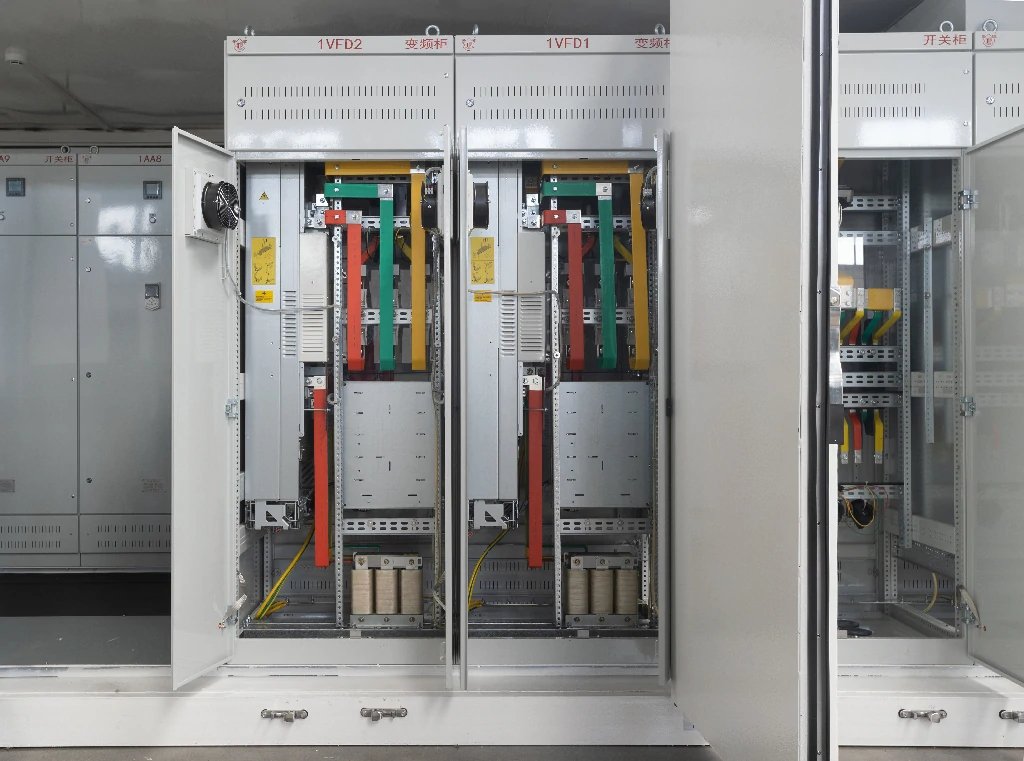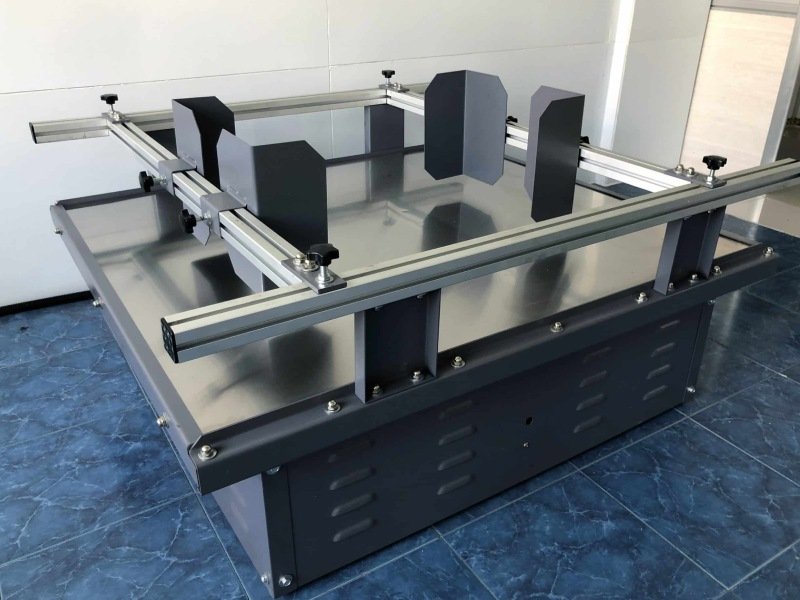Slam latches are mechanical fastening devices designed to secure doors, panels, or lids by engaging automatically when the door or panel is closed with force. Unlike traditional latches that require manual activation (e.g., turning a knob or sliding a bolt), slam latches operate through a spring-loaded mechanism that locks into place upon impact. This unique feature makes them ideal for applications where quick, reliable, and hands-free closure is essential.
Slam latches are widely used across industries, from automotive and aerospace to marine, industrial enclosures, and consumer products. Their simplicity, durability, and ease of use have made them a preferred choice in environments where efficiency and security are paramount. This article explores the design, types, applications, advantages, and considerations of slam latches, providing a comprehensive overview of their role in modern engineering and design.
How Slam Latches Work
At their core, slam latches rely on a spring-loaded mechanism that engages when a door or panel is pushed or slammed shut. The latch typically consists of the following components:
- Latch Body: The main housing that contains the internal mechanism.
- Spring: Provides the force needed to engage the latch automatically.
- Catch or Bolt: The component that extends into a strike plate or receiver to secure the closure.
- Strike Plate or Receiver: A fixed component on the frame that the latch engages with.
- Release Mechanism: A lever, knob, or pull that disengages the latch for opening.
When the door is closed, the catch or bolt is momentarily compressed against the spring as it contacts the strike plate. Once aligned, the spring pushes the catch into the receiver, securing the door. To open, the user activates the release mechanism, which retracts the catch, allowing the door to swing free.
This design ensures that slam latches are intuitive to use, requiring minimal user effort during closure while maintaining a secure hold. The force of the slam, combined with the spring’s action, eliminates the need for additional locking steps.
Types of Slam Latches
Slam latches come in various designs, each tailored to specific applications and requirements. Below are the most common types:
1. Push-to-Close Slam Latches
These are the most basic and widely used slam latches. They engage automatically when the door is pushed shut, with the spring-loaded catch snapping into the strike plate. Push-to-close latches are common in cabinetry, electrical enclosures, and vehicle compartments.
2. Paddle Latches
Paddle latches feature a flat, paddle-shaped handle that serves both as the release mechanism and a visual indicator of the latch’s status. They are popular in marine applications, RV compartments, and industrial equipment due to their durability and ease of operation, even with gloved hands.
3. Rotary Slam Latches
Rotary slam latches use a rotating catch that engages with the strike plate. They are highly secure and resistant to vibration, making them ideal for automotive, aerospace, and heavy machinery applications. Their design minimizes wear and ensures consistent performance in high-stress environments.
4. Compression Slam Latches
These latches combine the slam mechanism with a compression feature, pulling the door tightly against the frame to create a seal. Compression slam latches are used in applications requiring water or dust resistance, such as outdoor enclosures, marine hatches, and HVAC systems.
5. Adjustable Slam Latches
Adjustable slam latches allow users to fine-tune the latch’s engagement point, accommodating variations in door alignment or frame tolerances. They are common in custom installations where precise fitment is critical.
6. Lockable Slam Latches
For added security, some slam latches include a locking mechanism, requiring a key or combination to disengage. These are used in secure enclosures, toolboxes, and vehicle storage compartments.
Each type of slam latch offers unique benefits, allowing engineers and designers to select the most suitable option based on the application’s requirements.
Materials and Manufacturing
Slam latches are manufactured from a variety of materials to suit different environments and performance needs. Common materials include:
- Stainless Steel: Offers excellent corrosion resistance, making it ideal for marine, outdoor, and industrial applications.
- Zinc Alloy: Provides a balance of strength and affordability, often used in consumer products and indoor applications.
- Aluminum: Lightweight and corrosion-resistant, suitable for aerospace and automotive uses.
- Plastic (e.g., Nylon or ABS): Used in lightweight or non-corrosive applications, such as consumer electronics or furniture.
The choice of material depends on factors such as environmental exposure, load requirements, and aesthetic preferences. For example, stainless steel is preferred in harsh marine environments, while plastic may suffice for lightweight cabinetry.
Manufacturing processes for slam latches include die-casting, injection molding (for plastic components), and precision machining. High-quality latches undergo rigorous testing to ensure durability, load capacity, and resistance to environmental factors like UV exposure, saltwater, or extreme temperatures.
Applications of Slam Latches
Slam latches are versatile and find applications across numerous industries. Below are some key sectors where they are commonly used:
1. Automotive and Transportation
In vehicles, slam latches secure glove compartments, storage bins, and hoods. Their ability to withstand vibration and provide quick access makes them ideal for cars, trucks, RVs, and buses. Lockable slam latches are often used in commercial vehicles to protect valuable cargo.
2. Marine
Marine environments demand latches that resist corrosion and provide secure closure against water ingress. Slam latches, particularly paddle and compression types, are used in boat hatches, storage compartments, and deck panels.
3. Industrial Enclosures
Electrical cabinets, control panels, and machinery enclosures rely on slam latches to ensure quick access for maintenance while maintaining security. Compression slam latches are popular in this sector for their ability to create dust- and water-tight seals.
4. Aerospace
In aircraft, slam latches secure access panels, storage compartments, and equipment bays. Their lightweight construction (when made from aluminum) and resistance to vibration make them a critical component in aerospace design.
5. Consumer Products
Slam latches are found in everyday items like toolboxes, furniture, and appliances. Their ease of use and sleek design enhance user experience in products ranging from kitchen cabinets to portable storage solutions.
6. Medical and Laboratory Equipment
In medical settings, slam latches secure carts, cabinets, and equipment enclosures, ensuring quick access to supplies while maintaining hygiene and safety standards.
7. HVAC and Refrigeration
Compression slam latches are used in HVAC units and refrigeration systems to create airtight seals, improving energy efficiency and preventing leaks.
The versatility of slam latches makes them a go-to solution in any application requiring reliable, user-friendly fastening.
Advantages of Slam Latches
Slam latches offer several benefits that contribute to their widespread adoption:
- Ease of Use: The automatic engagement eliminates the need for manual locking, saving time and effort.
- Quick Installation: Most slam latches are designed for easy mounting, reducing assembly time.
- Durability: High-quality materials and robust designs ensure long-term performance, even in demanding environments.
- Versatility: Available in various types, materials, and configurations, slam latches suit a wide range of applications.
- Security: Lockable and rotary slam latches provide enhanced protection against unauthorized access.
- Sealing Capabilities: Compression slam latches create tight seals, ideal for weatherproof or dustproof enclosures.
These advantages make slam latches a practical and efficient choice for both manufacturers and end-users.
Disadvantages and Limitations
While slam latches are highly effective, they have some limitations:
- Vibration Sensitivity: In high-vibration environments, non-rotary slam latches may loosen over time, requiring additional securing mechanisms.
- Wear and Tear: Spring-loaded components can wear out with frequent use, necessitating maintenance or replacement.
- Alignment Requirements: Slam latches require precise alignment between the latch and strike plate for proper operation, which can complicate installation in some cases.
- Limited Load Capacity: Compared to heavy-duty bolts or locks, slam latches may not withstand extreme forces or heavy loads.
- Cost: High-quality or specialized slam latches (e.g., stainless steel or lockable models) can be more expensive than basic latches.
Understanding these limitations helps designers select the appropriate latch for their specific needs and mitigate potential issues through proper installation and maintenance.
Design Considerations for Slam Latches
When integrating slam latches into a design, engineers must consider several factors to ensure optimal performance:
1. Load and Force Requirements
Determine the force the latch must withstand, including both static loads (e.g., weight of the door) and dynamic forces (e.g., impact during closure). Select a latch with adequate load capacity to prevent failure.
2. Environmental Conditions
Consider exposure to moisture, chemicals, UV radiation, or extreme temperatures. For example, stainless steel or plastic latches are better suited for corrosive environments than zinc alloys.
3. Alignment and Tolerance
Ensure precise alignment between the latch and strike plate. Adjustable slam latches can accommodate minor misalignments, but proper installation is critical for consistent operation.
4. User Interaction
Evaluate how users will interact with the latch. For example, paddle latches are easier to operate with gloves, while lockable latches enhance security for restricted areas.
5. Aesthetic Requirements
In consumer-facing applications, the latch’s appearance matters. Choose finishes (e.g., polished stainless steel or powder-coated) that complement the overall design.
6. Sealing Needs
For applications requiring water or dust resistance, opt for compression slam latches and ensure the latch integrates with appropriate gaskets or seals.
7. Maintenance and Durability
Select latches with robust springs and minimal moving parts to reduce maintenance needs. Regular lubrication or inspection may be required in high-use applications.
By addressing these considerations, designers can maximize the performance and longevity of slam latches in their projects.
Installation and Maintenance
Installing slam latches is typically straightforward, requiring basic tools like screws, rivets, or adhesives, depending on the latch design. Key steps include:
- Marking and Alignment: Mark the mounting points on the door and frame, ensuring the latch and strike plate align perfectly.
- Securing the Latch: Attach the latch body to the door using the provided mounting holes. Use appropriate fasteners for the material (e.g., wood screws for wooden panels, rivets for metal).
- Installing the Strike Plate: Mount the strike plate on the frame, double-checking alignment with the latch.
- Testing: Close the door to verify smooth engagement and disengagement. Adjust as needed to eliminate play or binding.
Maintenance involves periodic inspection for wear, lubrication of moving parts (if recommended by the manufacturer), and cleaning to remove debris or corrosion. In high-vibration environments, check for loose fasteners and tighten as needed.
Future Trends in Slam Latch Technology
As industries evolve, slam latches are adapting to meet new demands. Emerging trends include:
- Smart Latches: Integration with electronic locking systems, allowing remote operation or monitoring via IoT platforms.
- Lightweight Materials: Advances in composites and polymers are enabling lighter, yet durable, slam latches for aerospace and automotive applications.
- Sustainability: Manufacturers are exploring eco-friendly materials and production methods to reduce environmental impact.
- Customization: 3D printing and modular designs are making it easier to create custom slam latches for niche applications.
These innovations are expanding the capabilities and applications of slam latches, ensuring their relevance in future designs.
Conclusion
Slam latches are a cornerstone of modern fastening technology, offering a unique combination of simplicity, reliability, and versatility. From securing vehicle compartments to sealing industrial enclosures, their ability to engage automatically and withstand diverse conditions makes them indispensable across industries. By understanding their types, applications, and design considerations, engineers and designers can leverage slam latches to enhance functionality and user experience in their products.
As technology advances, slam latches will continue to evolve, incorporating smart features and sustainable materials to meet the needs of tomorrow’s industries. Whether in a boat hatch, a medical cart, or a consumer toolbox, slam latches prove that even the simplest mechanisms can have a profound impact on design and performance.







